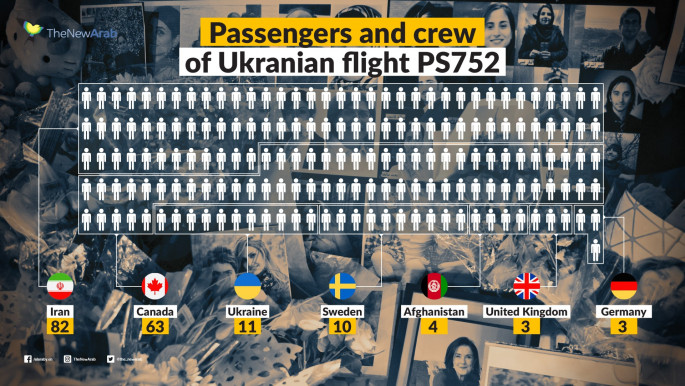Iran confirms two of its missiles shot down Ukrainian plane
Iran has confirmed two missiles were fired at a Ukrainian airliner brought down earlier this month, in a catastrophic error that killed all 176 people on board and sparked angry protests.
The country's civil aviation authority said it has yet to receive a positive response after requesting technical assistance from France and the US to decode black boxes from the downed airliner.
The Kiev-bound Ukraine International Airlines plane was accidentally shot down shortly after takeoff from Tehran's Imam Khomeini International Airport on 8 January.
The Boeing 737 was downed when Iran's air defences had been on high alert hours after its armed forces fired more than 20 ballistic missiles at American troops stationed in Iraq, in retaliation for the US' assassination of Iranian General Qasem Soleimani.
Iran has come under mounting international pressure to carry out a full and transparent investigation into the air disaster.
Comment: Is this Iran's 'Chernobyl moment'?
"Investigators... discovered that two Tor-M1 missiles... were fired at the aircraft," Iran's Civil Aviation Organisation said in a preliminary report posted on its website late Monday.
It said an investigation was ongoing to assess the bearing their impact had on the accident.
The statement confirms a report in The New York Times which included video footage appearing to show two projectiles being fired at the airliner.
The Tor-M1 is a short-range surface-to-air missile developed by the former Soviet Union that is designed to target aircraft or cruise missiles.
In the days that followed, Iran denied Western claims based on US intelligence reports that the Boeing 737 had been shot down.
It came clean on 11 January, when the Revolutionary Guards' aerospace commander Brigadier General Amirali Hajizadeh accepted full responsibility.
But he said the missile operator who opened fire had been acting independently.
Black box impasse
The deadly blunder triggered days of student-led protests mainly in the Iranian capital Tehran.
Supreme Leader Ayatollah Ali Khamenei said on Friday that the demonstrations were unrepresentative of the Iranian people and accused the country's enemies of exploiting the air disaster for propaganda purposes.
In its report, the Civil Aviation Organisation said it was "impossible" for it to read the flight data and cockpit voice recorders - commonly known as black boxes - because they were so advanced.
But it suggested Iran wants to keep them for now.
"If devices are provided, the information (on the black boxes) can be restored and retrieved in a short period of time," it said.
The aviation body said it had asked its French and US counterparts, the BEA and NTSB respectively, to provide a list of the equipment required to read the black boxes.
It said it had also sought the transfer of the equipment, but added that neither the BEA nor NTSB had "so far responded positively".
It said it had acquired the list nonetheless, without saying how, and hinted it would use it to buy the equipment itself.
The report said that based on passports used to board Flight PS752, there were 146 Iranians, 11 Ukrainians including nine crew members, 10 Afghans and four Swedes on the ill-fated airliner.
Canada, which says 57 of its nationals were on the plane, has repeatedly asked Iran to hand the black boxes over to Ukraine or France for expert analysis.





 Follow the Middle East's top stories in English at The New Arab on Google News
Follow the Middle East's top stories in English at The New Arab on Google News
![The UAE is widely suspected of arming the RSF militia [Getty]](/sites/default/files/styles/image_330x185/public/2024-11/GettyImages-472529908.jpg?h=69f2b9d0&itok=Yauw3YTG)
![Netanyahu furiously denounced the ICC [Getty]](/sites/default/files/styles/image_330x185/public/2024-11/GettyImages-2169352575.jpg?h=199d8c1f&itok=-vRiruf5)
![Both Hamas and the Palestinian Authority welcomed the ICC arrest warrants [Getty]](/sites/default/files/styles/image_330x185/public/2024-11/GettyImages-2178351173.jpg?h=199d8c1f&itok=TV858iVg)